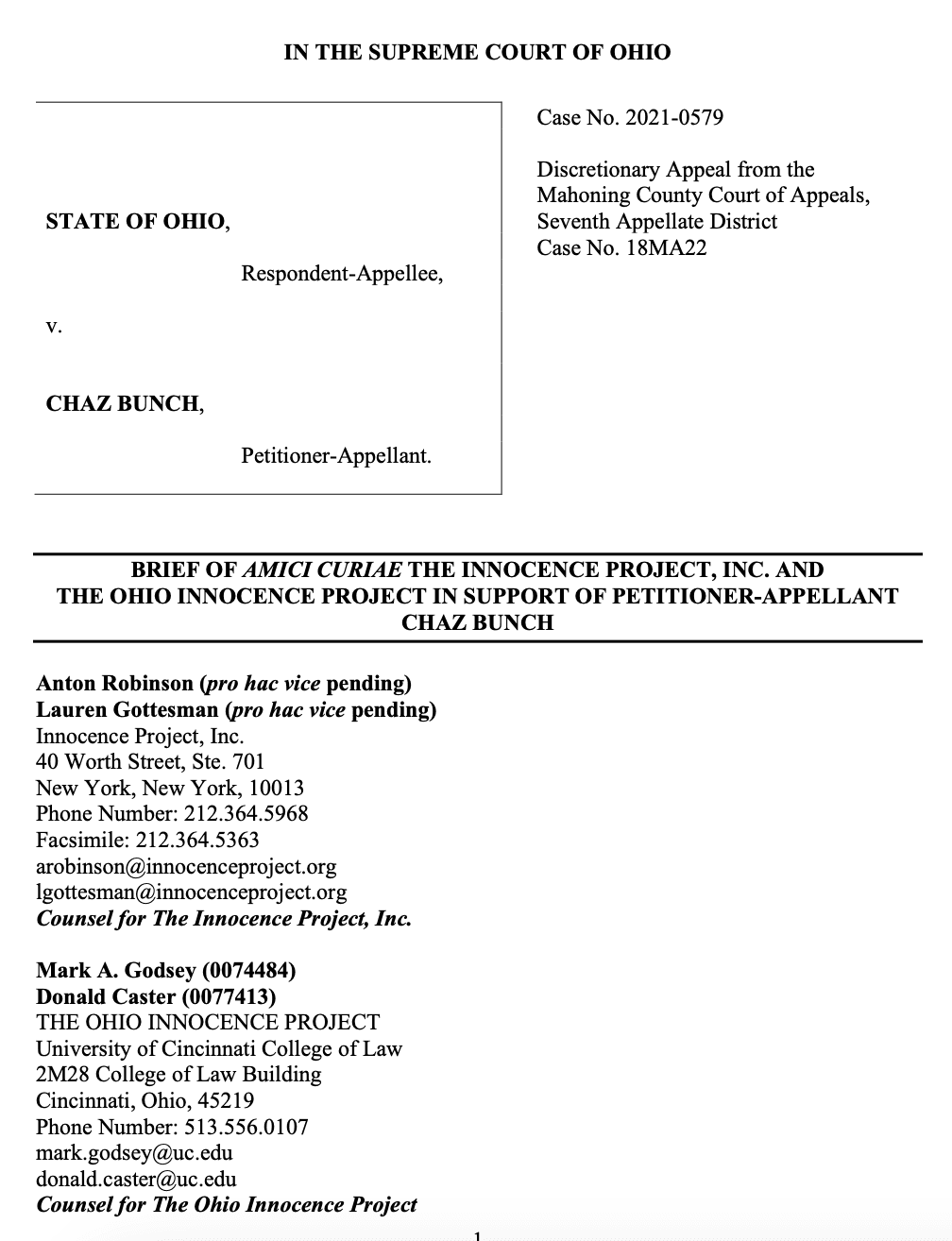
Summary of Argument
Despite being excluded as a possible donor of the male DNA recovered from the victim during the rape kit examination, Chaz Bunch—at only 17 years old—was convicted of rape and other related charges, primarily based upon a suggestive in-court, cross-race identification, by the victim in the instant case, who: (1) failed to identify him in a photographic lineup days after the crime, (2) was, thereafter, exposed to Mr. Bunch’s photograph in prejudicial media coverage of the offense, and (3) only positively identified him more than one year after the offense, in the courtroom at proceedings in which Mr. Bunch was clearly presented to her as the accused. Despite expanding awareness in criminal courts around the nation about the fallibility of eyewitness memory, and his original counsel’s efforts to obtain an expert witness, Mr. Bunch’s trial counsel— who has since been indefinitely suspended from the Ohio bar—inexplicably did not present expert testimony to help the jury weigh the reliability of the eyewitness identification evidence.
For the reasons that follow, amici urge this Court to modify the current legal framework for assessing the reliability of eyewitness identification evidence and to remand the instant matter for the presentation of scientific evidence regarding the identification at issue—an identification that bears several indicia of unreliability.